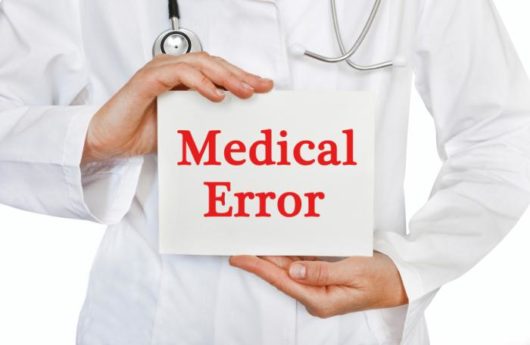When you are sick or injured, you want the best medical care available. Even when you are being treated by qualified health care providers, things sometimes have the potential to go wrong, and they do.
Medical errors are an all too common situation that can cost everyone involved. In many instances, it winds up the patient who must pay for the cost of the mistakes, financially, physically, and mentally. Some health insurance plans may pay for medical errors, but defining what is or isn’t a medical error is a glitch in the system that throws the cost back onto the patient.
Medical Errors
There are two main types of medical errors. These are “errors of omission” and “errors of the commission.” Errors of omission are when an action is not taken, and in turn, causing patient harm. This could be not securing a patient in a wheelchair causing the person to fall out and break a bone, or get a concussion. Errors of commission are caused by a wrong action being taken, such as administering an incorrect medication to a patient, causing a severe side-effect, allergic reaction, or death.

Some of the most common medical errors are unnecessary tests, treatments or procedures, a misdiagnosis, medication mistakes, accidents in a healthcare facility, or a patient being discharged too soon. Other issues involving medical errors are infections caused by conditions in a healthcare facility, miscommunications between professional health care providers, and “never events” type situations. “Never events” are medical errors that are considered identifiable, preventable, and serious in nature. These include such situations as surgical equipment left in a body after surgery, the wrong blood type given in a transfusion, and pressure ulcers.
Wrong sites surgery is another medical error that is considered a “never event.” This is when a surgeon operates on the wrong body part, such as a right leg instead of the left that was supposed to have the surgery.
The Statistics of Medical Errors in the US
A recent study done by John Hopkins Medicine determined that 10% of all deaths were caused by medical errors. The study also stated that this was the third highest cause of death in the U.S. The research was conducted over 8-years by John Hopkins Patient Safety Experts. They calculated that over 250,000 deaths per year were attributed to medical errors.
Patient Safety and Law
In 2005 the Patient Safety and Quality Improvement Act was signed into law. The goal of the legislation was to improve the care of patients by encouraging health care providers to voluntarily and confidentially report health care events that adversely affected patients. The Patient Safety Organization was formed by the Department of Health and Human Services to work with health care providers and facilities to implement the new law and help improve patient safety and health care quality.

The Department of Health and Human Services also created the Patient Safety and Quality Improvement Rule to establish guidelines and quality-control for the new law. This was to ensure that health care providers could report medical errors to Patient Safety Organizations on a confidentiality basis. In creating the rule and organization, the DHHS is hoping to decrease medical errors that go unreported and to reduce the amount of mistakes caused by health care providers.
What Type of Insurance Covers Medical Errors
One of the main goals of the Affordable Care Act (ACA) for the health insurance industry was to improve the overall health care of citizens in the United States. One of the premises being, that an improvement in health care services and providers would make a positive impact on patient safety and well-being. The basis was, if health care is of higher quality there would be fewer medical errors.
Health insurance plans often don’t cover medical errors because they are not within the normal realm of what is considered health care for specific diagnostic procedures and treatments. Hospitals and medical professionals are reluctant to admit to mistakes, and even more so to pay for them. Medical malpractice suits are meant to hold doctors and hospitals accountable for wrong-doing, but the proof of a medical error is unfortunately placed on the patient. This puts the cost of medical mistakes back into the patient’s pocket.
Bottom Line on Medical Errors and Health Reform

Unfortunately for many, medical errors do happen. When faced with the results of a mistake made by a physician or other health care provider many patients have to pocket the cost themselves.
With studies showing medical errors as a leading cause of death in the U.S., legislature and the health care industry are taking a much closer look at why this is happening, and what can be done to improve patient safety. The main focus of new laws and regulations regarding medical errors is to take the financial burden off of the patient and place it on the health care provider and the health insurance companies, where it belongs.



